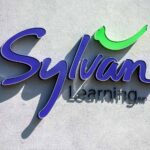Inquiry-based learning is a dynamic educational approach that fosters curiosity and empowers learners to explore concepts through investigation, questioning, and critical thinking. At LEARNS.EDU.VN, we champion this methodology as a pathway to deeper understanding and lasting knowledge retention, encouraging active participation and the development of essential problem-solving skills. This method transforms students into active investigators and knowledge constructors, rather than passive recipients, supporting curiosity-driven education, self-directed learning, and investigative studies.
1. Understanding Inquiry-Based Learning
Inquiry-based learning is a student-centered approach that begins with a question or problem. Instead of directly presenting facts, teachers act as facilitators, guiding students through the process of exploration and discovery. This approach cultivates critical thinking, problem-solving, and collaboration skills.
1.1. The Core Principles of Inquiry-Based Learning
At its heart, inquiry-based learning revolves around several core principles:
- Student-Driven: Learners take ownership of their learning journey, making choices about what and how they learn.
- Questioning: Posing meaningful questions drives the learning process, encouraging exploration and critical analysis.
- Investigation: Learners actively engage in research, experimentation, and data collection to find answers.
- Collaboration: Working together, students share ideas, build on each other’s knowledge, and develop teamwork skills.
- Reflection: Learners critically examine their processes and findings, refining their understanding and approach.
1.2. Key Characteristics of Inquiry-Based Learning
Inquiry-based learning is characterized by the following elements:
- Engagement: Learners actively participate in the learning process.
- Exploration: Learners are encouraged to explore and investigate.
- Evidence-Based: Conclusions are based on evidence gathered through research and analysis.
- Explanation: Learners construct their explanations and understanding.
- Elaboration: Learners expand on their understanding through further investigation and application.
- Evaluation: Learners assess their understanding and the process of inquiry.
1.3. Inquiry-Based Learning vs Traditional Learning
| Feature | Inquiry-Based Learning | Traditional Learning |
|---|---|---|
| Focus | Student-led investigation and discovery | Teacher-led instruction and memorization |
| Role of Teacher | Facilitator, guide, and resource | Instructor, lecturer, and knowledge provider |
| Learning Style | Active, hands-on, and collaborative | Passive, receptive, and individual |
| Questioning | Emphasized as a tool for exploration | Often limited to comprehension checks |
| Knowledge | Constructed by the learner through investigation | Transferred from teacher to student |
| Assessment | Emphasizes process, critical thinking, and application | Primarily focuses on memorization and recall |
| Student Autonomy | High degree of autonomy and choice | Limited autonomy and choice |
| Real-World Links | Strong emphasis on real-world applications | May lack clear connections to real-world contexts |



2. The Inquiry-Based Learning Process: A Step-by-Step Guide
Inquiry-based learning typically follows a structured process that guides students from initial questions to well-supported conclusions. Let’s explore each step in detail:
2.1. Step 1: Asking Questions
The learning journey begins with a question, sparking curiosity and setting the stage for investigation.
- Identifying Questions: Encourage students to generate their questions about a topic. What intrigues them? What do they want to know more about?
- Types of Questions: Guide students to develop different question types, including:
- Factual Questions: Seeking specific information.
- Conceptual Questions: Exploring underlying ideas and principles.
- Provocative Questions: Challenging assumptions and stimulating debate.
- Refining Questions: Help students refine their questions to be clear, focused, and researchable.
2.2. Step 2: Investigating
With questions in hand, students embark on a quest to gather information and explore possible answers.
- Research Strategies: Equip students with effective research strategies:
- Library Resources: Utilize books, journals, and databases.
- Online Resources: Evaluate websites, articles, and multimedia content.
- Expert Interviews: Conduct interviews with knowledgeable individuals.
- Experiments: Design and conduct experiments to test hypotheses.
- Surveys: Gather data through questionnaires and polls.
- Information Evaluation: Teach students to critically evaluate sources for credibility, bias, and relevance.
- Data Collection: Emphasize accurate and organized data collection methods.
2.3. Step 3: Creating
As students gather information, they begin to synthesize their findings and create explanations.
- Data Analysis: Guide students in analyzing the data they have collected.
- Explanation Construction: Encourage students to develop their explanations based on evidence.
- Connecting Ideas: Help students connect their findings to existing knowledge and theories.
- Addressing Alternative Explanations: Guide students in addressing alternative explanations and perspectives.
2.4. Step 4: Discussing
Inquiry-based learning thrives on collaboration and the sharing of ideas.
- Small Group Discussions: Facilitate small group discussions where students can share their findings, explanations, and perspectives.
- Whole Class Discussions: Moderate whole class discussions to synthesize ideas and reach a deeper understanding.
- Respectful Communication: Encourage students to listen attentively, ask clarifying questions, and respectfully challenge each other’s ideas.
- Debate and Argumentation: Provide opportunities for students to engage in debates and construct arguments based on evidence.
2.5. Step 5: Reflecting
The final step involves critical reflection on the learning process and the knowledge gained.
- Individual Reflection: Encourage students to reflect individually on their learning journey, considering what they have learned, what challenges they faced, and how they overcame them.
- Group Reflection: Facilitate group reflection sessions where students can share their insights and learn from each other’s experiences.
- Assessing Understanding: Help students assess their understanding of the topic and identify areas where they need further clarification.
- Applying Learning: Encourage students to think about how they can apply their learning to new situations and real-world problems.
2.6. Real-World Example of Applying the Steps
Imagine a class studying climate change. Here’s how the five steps could be applied:
- Asking Questions: Students brainstorm questions about the causes and effects of climate change.
- Investigating: They research data from scientific reports, articles, and interviews with experts.
- Creating: Students analyze the data and create explanations about the impact of climate change on different regions.
- Discussing: They engage in discussions, sharing their findings and perspectives on possible solutions.
- Reflecting: Students reflect on their learning, assessing their understanding and considering actions to mitigate climate change.
3. Benefits of Inquiry-Based Learning
Inquiry-based learning offers a wide array of benefits that extend far beyond traditional rote memorization.
3.1. Enhanced Critical Thinking Skills
Inquiry-based learning necessitates analyzing information, evaluating evidence, and forming logical arguments. This process directly cultivates critical thinking skills, which are essential for academic success and navigating complex real-world challenges.
3.2. Increased Student Engagement and Motivation
By allowing students to pursue their interests and questions, inquiry-based learning ignites curiosity and fosters a deeper sense of ownership over their learning. This increased engagement translates into higher motivation and a more positive learning experience.
3.3. Development of Problem-Solving Abilities
Inquiry-based learning presents students with authentic problems that require creative solutions. Through investigation, experimentation, and collaboration, students develop valuable problem-solving skills that are transferable to various contexts.
3.4. Improved Collaboration and Communication Skills
Inquiry-based learning emphasizes teamwork and the sharing of ideas. As students collaborate on projects, they learn to communicate effectively, listen to different perspectives, and build consensus – crucial skills for success in both academic and professional settings.
3.5. Deeper Understanding and Knowledge Retention
Instead of passively receiving information, students actively construct their understanding through inquiry. This active engagement leads to deeper learning and improved knowledge retention, as students are more likely to remember concepts they have explored and discovered for themselves.
3.6. Benefits Overview Table
| Benefit | Description |
|---|---|
| Enhanced Critical Thinking Skills | Ability to analyze information, evaluate evidence, and form logical arguments. |
| Increased Student Engagement | Fosters curiosity and a deeper sense of ownership over learning. |
| Development of Problem-Solving Abilities | Presents authentic problems that require creative solutions. |
| Improved Collaboration and Communication | Emphasizes teamwork and the sharing of ideas, enhancing communication and teamwork skills. |
| Deeper Understanding and Knowledge | Students actively construct their understanding through inquiry, leading to improved retention. |
4. Implementing Inquiry-Based Learning in the Classroom
Implementing inquiry-based learning requires careful planning and a shift in the teacher’s role from instructor to facilitator.
4.1. Creating a Supportive Learning Environment
- Establish Clear Expectations: Clearly communicate the goals and expectations of inquiry-based activities.
- Foster a Culture of Curiosity: Encourage students to ask questions and explore their interests.
- Promote Risk-Taking: Create a safe space where students feel comfortable taking risks and making mistakes.
- Value Diverse Perspectives: Acknowledge and celebrate the unique perspectives and experiences of all learners.
4.2. Designing Inquiry-Based Activities
- Start with a Compelling Question: Choose a question that is relevant, engaging, and open-ended.
- Provide Resources and Guidance: Offer a variety of resources and guidance to support student investigation.
- Allow for Student Choice: Give students some control over the topics they explore and the methods they use.
- Incorporate Collaboration: Design activities that encourage teamwork and the sharing of ideas.
- Plan for Reflection: Include opportunities for students to reflect on their learning process and the knowledge they have gained.
4.3. Facilitating Inquiry-Based Learning
- Ask Guiding Questions: Instead of providing direct answers, ask guiding questions that prompt students to think critically.
- Encourage Exploration: Allow students time to explore and investigate their questions independently.
- Provide Feedback: Offer constructive feedback that helps students refine their understanding and approach.
- Monitor Progress: Keep track of student progress and provide support as needed.
- Celebrate Success: Acknowledge and celebrate student achievements and growth.
4.4. Practical Tips for Educators
To ensure successful implementation of inquiry-based learning, consider the following tips:
- Start Small: Begin with simple inquiry-based activities and gradually increase complexity.
- Model Inquiry: Demonstrate your curiosity and model the process of asking questions and seeking answers.
- Provide Scaffolding: Offer support and guidance to students who need it, gradually reducing assistance as they become more confident.
- Use Technology: Leverage technology to access information, collaborate with others, and create presentations.
- Assess Formatively: Use formative assessment techniques to monitor student understanding and adjust instruction accordingly.
5. Inquiry-Based Learning Examples Across Subjects
Inquiry-based learning can be effectively implemented across various subjects. Here are a few examples:
5.1. Science
- Question: How does the amount of sunlight affect plant growth?
- Investigation: Students design and conduct experiments to test the effect of different light levels on plant growth.
- Creation: They analyze the data and create graphs to present their findings.
- Discussion: Students discuss their results and draw conclusions about the optimal light levels for plant growth.
- Reflection: They reflect on the experimental design and identify potential sources of error.
5.2. History
- Question: What were the primary causes of the American Revolution?
- Investigation: Students research historical documents, articles, and books to gather information about the events leading up to the revolution.
- Creation: They create timelines, presentations, or essays to explain the causes of the revolution.
- Discussion: Students debate the relative importance of different factors in causing the revolution.
- Reflection: They reflect on the challenges of interpreting historical evidence and the importance of considering multiple perspectives.
5.3. Literature
- Question: How does the setting of a novel influence the characters and plot?
- Investigation: Students analyze the setting of a novel, identifying key elements and their potential impact on the story.
- Creation: They write essays, create presentations, or engage in role-playing activities to explore the relationship between setting and character/plot.
- Discussion: Students discuss their interpretations of the novel and the role of setting in shaping the narrative.
- Reflection: They reflect on the process of literary analysis and the importance of considering context when interpreting texts.
5.4. Mathematics
- Question: How can you design the most efficient package for a set of objects?
- Investigation: Students explore different packaging designs, calculating surface area, volume, and material costs.
- Creation: They create models or prototypes of their designs, optimizing for efficiency and cost-effectiveness.
- Discussion: Students present their designs and justify their choices based on mathematical principles.
- Reflection: They reflect on the process of mathematical modeling and its applications in real-world problem-solving.
5.5. Examples of Inquiry-Based Activities by Grade Level
| Grade Level | Subject | Activity |
|---|---|---|
| Elementary | Science | Students grow different types of seeds under varying conditions to observe and record growth patterns. |
| Middle | History | Students research and debate the causes and consequences of a historical event, presenting their findings in a mock trial. |
| High School | Literature | Students analyze themes in a novel by conducting research on the author’s life and historical context, presenting their findings in class. |
6. Tools and Resources for Inquiry-Based Learning
A variety of tools and resources can support inquiry-based learning in the classroom.
6.1. Online Research Databases
- JSTOR: A digital library with a vast collection of academic journals, books, and primary sources.
- ProQuest: A database with newspapers, dissertations, and other scholarly materials.
- Google Scholar: A search engine that indexes scholarly literature.
6.2. Collaboration Platforms
- Google Workspace for Education: Provides a suite of tools for collaboration, including Google Docs, Google Slides, and Google Meet.
- Microsoft Teams: A platform for communication, collaboration, and file sharing.
- Padlet: A virtual bulletin board for sharing ideas and resources.
6.3. Data Analysis Software
- Microsoft Excel: A spreadsheet program for organizing and analyzing data.
- Google Sheets: A web-based spreadsheet program.
- Tableau: A data visualization tool for creating interactive charts and graphs.
6.4. Digital Storytelling Tools
- Storybird: A platform for creating illustrated stories.
- iMovie: A video editing software for creating movies and trailers.
- Powtoon: A tool for creating animated videos and presentations.
6.5. Suggested Resources Table
| Resource Type | Examples |
|---|---|
| Online Research Databases | JSTOR, ProQuest, Google Scholar |
| Collaboration Platforms | Google Workspace for Education, Microsoft Teams, Padlet |
| Data Analysis Software | Microsoft Excel, Google Sheets, Tableau |
| Digital Storytelling Tools | Storybird, iMovie, Powtoon |
7. Addressing Challenges in Inquiry-Based Learning
While inquiry-based learning offers numerous benefits, it also presents certain challenges.
7.1. Time Constraints
Inquiry-based learning can be time-consuming, as students need time to explore their questions and conduct research.
- Solution: Plan carefully and prioritize activities, focusing on the most essential learning objectives.
- Solution: Integrate inquiry-based activities into existing curriculum units.
- Solution: Use technology to streamline research and data collection processes.
7.2. Assessment Difficulties
Assessing student learning in inquiry-based environments can be challenging, as the focus is on the process rather than just the product.
- Solution: Use a variety of assessment methods, including formative assessments, performance tasks, and self-reflection.
- Solution: Develop rubrics that assess critical thinking, problem-solving, and collaboration skills.
- Solution: Provide students with opportunities to demonstrate their learning in multiple ways.
7.3. Resource Limitations
Inquiry-based learning may require access to a variety of resources, which may not always be readily available.
- Solution: Utilize free or low-cost online resources.
- Solution: Partner with local libraries, museums, and community organizations.
- Solution: Encourage students to share resources and collaborate.
7.4. Student Resistance
Some students may resist inquiry-based learning, preferring the more structured environment of traditional instruction.
- Solution: Gradually introduce inquiry-based activities.
- Solution: Explain the benefits of inquiry-based learning and how it can help students develop valuable skills.
- Solution: Provide students with support and guidance as they adjust to the new approach.
7.5. Addressing Common Issues Table
| Issue | Solution |
|---|---|
| Time Constraints | Plan carefully, integrate activities into existing units, and use technology to streamline processes. |
| Assessment Issues | Use a variety of assessment methods, develop rubrics, and provide students with multiple ways to demonstrate learning. |
| Resource Limits | Utilize free online resources, partner with local organizations, and encourage resource sharing. |
| Student Resistance | Gradually introduce activities, explain the benefits, and provide support during the adjustment period. |
8. The Future of Inquiry-Based Learning
Inquiry-based learning is poised to play an increasingly important role in education as the world becomes more complex and rapidly changing.
8.1. Personalized Learning
Inquiry-based learning aligns well with personalized learning approaches, which tailor instruction to meet the unique needs and interests of individual learners. By allowing students to pursue their questions and explore their passions, inquiry-based learning can help create more engaging and effective learning experiences.
8.2. Technology Integration
Technology will continue to play a critical role in inquiry-based learning, providing students with access to vast amounts of information, collaboration tools, and data analysis software. Educators will need to develop the skills and knowledge necessary to effectively integrate technology into inquiry-based activities.
8.3. Emphasis on 21st-Century Skills
Inquiry-based learning helps students develop essential 21st-century skills, such as critical thinking, problem-solving, communication, and collaboration. As these skills become increasingly important in the workplace, inquiry-based learning will be essential for preparing students for success in the future.
8.4. Preparing Students for a Rapidly Changing World
The world is evolving at an unprecedented pace. Inquiry-based learning equips students with the skills to adapt, innovate, and lead in this dynamic landscape.
9. Inquiry-Based Learning for Lifelong Learners
Inquiry-based learning is not just for the classroom; it’s a valuable skill for lifelong learners.
9.1. Cultivating Curiosity
Inquiry-based learning fosters a sense of curiosity and a desire to explore new ideas and information. This curiosity can drive individuals to seek out new learning opportunities throughout their lives.
9.2. Developing Self-Directed Learning Skills
Inquiry-based learning empowers individuals to take control of their learning, setting goals, identifying resources, and evaluating their progress. These self-directed learning skills are essential for navigating the ever-changing landscape of knowledge and information.
9.3. Enhancing Problem-Solving Abilities
Inquiry-based learning equips individuals with the problem-solving skills necessary to tackle complex challenges in their personal and professional lives. By learning to ask questions, gather information, and analyze data, individuals can make informed decisions and find creative solutions.
9.4. Building a Foundation for Continuous Growth
Inquiry-based learning sets the stage for continuous improvement and growth. By embracing curiosity and developing self-directed learning skills, individuals can adapt to new challenges and thrive in a rapidly evolving world.
10. Frequently Asked Questions (FAQs) about Inquiry-Based Learning
Here are some frequently asked questions about inquiry-based learning:
- What is inquiry-based learning and how does it differ from traditional teaching methods?
Inquiry-based learning is a student-centered approach where learning is driven by student questions and investigations, unlike traditional methods that are teacher-led and focus on direct instruction. - How do I start implementing inquiry-based learning in my classroom?
Begin by introducing open-ended questions and activities that encourage students to explore topics of interest. Gradually shift the focus from direct instruction to facilitating student-led investigations. - What role does the teacher play in inquiry-based learning?
The teacher acts as a facilitator, guiding students, providing resources, and fostering a supportive learning environment rather than lecturing. - How can I assess student learning in inquiry-based projects?
Use a variety of assessment methods such as formative assessments, performance tasks, self-reflection, and rubrics that evaluate critical thinking, problem-solving, and collaboration skills. - Is inquiry-based learning suitable for all subjects and grade levels?
Yes, inquiry-based learning can be adapted for various subjects and grade levels by tailoring the complexity and scope of the inquiry to match students’ abilities and interests. - What are some common challenges when using inquiry-based learning and how can I address them?
Common challenges include time constraints, assessment difficulties, and student resistance. Address these by planning carefully, using varied assessments, and gradually introducing inquiry-based activities. - How does technology support inquiry-based learning?
Technology provides access to vast amounts of information, collaboration tools, and data analysis software, enhancing research and analytical capabilities. - Can inquiry-based learning improve student engagement and motivation?
Yes, by allowing students to pursue their interests and questions, inquiry-based learning ignites curiosity and fosters a deeper sense of ownership over their learning, leading to increased engagement and motivation. - How can I encourage students to ask good questions?
Model curiosity, encourage a culture of questioning, and provide feedback that helps students refine their questions to be clear, focused, and researchable. - What are the long-term benefits of inquiry-based learning?
Long-term benefits include enhanced critical thinking skills, improved problem-solving abilities, better collaboration and communication skills, and a deeper understanding of the subject matter, preparing students for lifelong learning.
At LEARNS.EDU.VN, we understand the challenges and aspirations of learners across all ages and backgrounds. Whether you’re a student seeking to master a complex subject, a professional aiming to upskill, or an enthusiast eager to explore a new hobby, we offer a wealth of resources and expert guidance to support your journey.
Ready to embark on a journey of discovery and unlock your full learning potential? Visit LEARNS.EDU.VN today and explore our diverse collection of articles, courses, and learning tools. Let us help you transform your curiosity into knowledge and your aspirations into achievements.
Contact us:
- Address: 123 Education Way, Learnville, CA 90210, United States
- Whatsapp: +1 555-555-1212
- Website: learns.edu.vn

